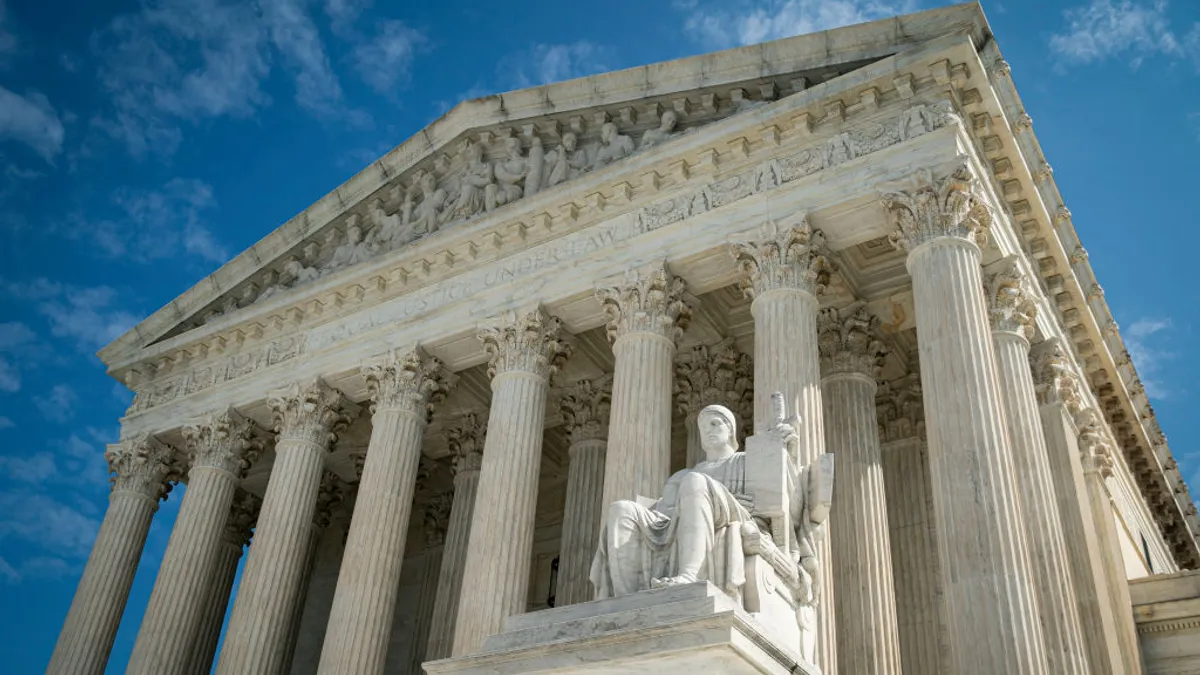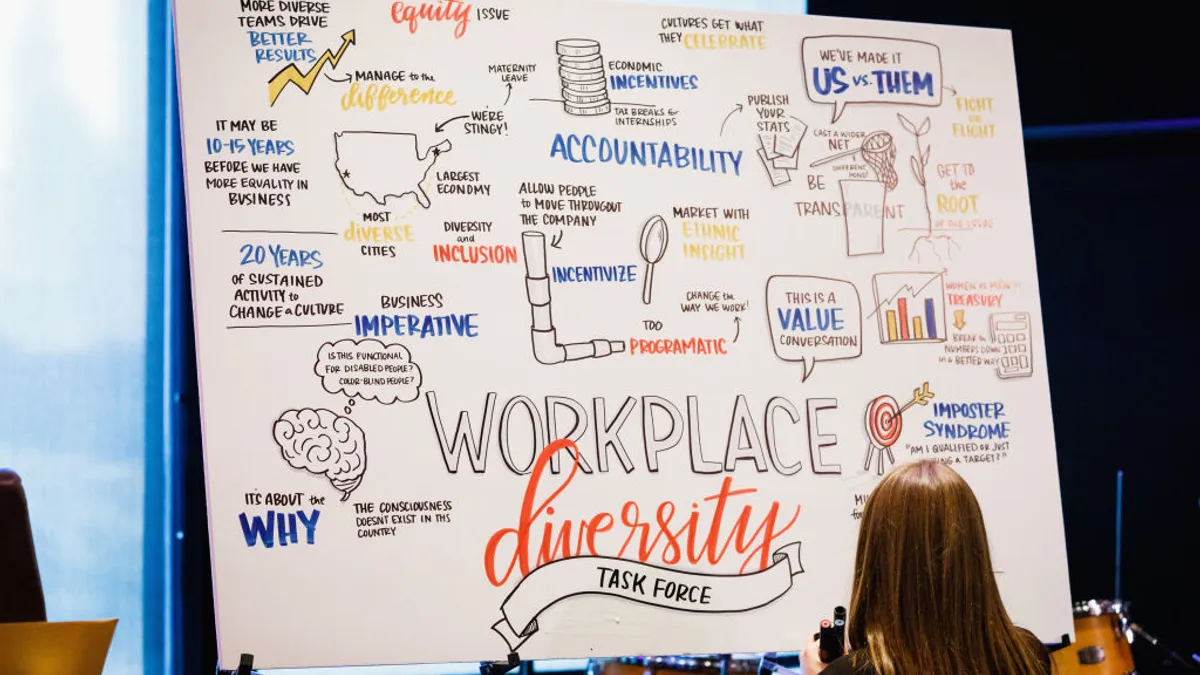Amber Rogers is a partner at Hunton Andrews Kurth LLP; Meredith Gregston is a senior attorney at the firm.

On June 29, the U.S. Supreme Court held that Harvard and UNC’s race-based admissions policies (more commonly known as “affirmative action”) violated the Equal Protection Clause of the Fourteenth Amendment, which prohibits States from denying any person equal protection of the laws of the United States, as well as Title VI of the Civil Rights Act.
The opinion doesn’t affect employment, but has lessons for HR pros hoping to ensure their DEI initiatives don’t unintentionally create liability.

Understanding SFFA v. Harvard College
Admittedly, both Harvard and UNC considered an applicant’s race at various stages. Harvard considered an applicant’s race in all five stages of its admission process, and UNC required its admissions officers to consider an applicant’s race among other factors like academic strength and student background. The schools’ stated goal in considering race was to train future generations of leaders, uncover new knowledge through a diverse student body, encourage the discussion of different viewpoints and ideas, and prepare engaged and productive citizens.
While the Supreme Court noted these goals were laudable, it held that it was well-established that colleges and universities cannot consider an applicant’s race as a positive or negative factor in admissions decisions.
Reviewing the selection processes under strict scrutiny, the Supreme Court noted the processes failed in three major ways. First, the affirmative action policies were too ambiguous for courts to review, as there was no practical way to quantify or qualify the racial standards and criteria imposed.
Second, the Court noted that these programs engaged in harmful stereotyping, stating that race-based admissions systems “fail to comply with the Equal Protection Clause’s twin commands that race may never be used as a ‘negative’ and that it may not operate as a stereotype.” As Justice Clarence Thomas noted in his concurrence, “lumping people together and judging them based on assumed inherited or ancestral traits is nothing but stereotyping.”
Finally, the Court emphasized that these programs contained no clear endpoint, as required by precedential case Grutter v. Bollinger, which stated that “[e]nshrining a permanent justification for racial preferences would offend” the Constitution’s guarantee of equal protection of the laws, and thus the use of racial classifications must have some identifiable end point.
In his concurring opinion, Justice Neil Gorsuch noted that these admissions programs also violate Title VI of the Civil Rights Act of 1964. Gorsuch explained that Title VI “prohibits a recipient of federal funds from intentionally treating any individual worse even in part because of his race, color, or national origin and without regard to any other reason or motive the recipient might assert.” Thus, Title VI applies to more actors (including private actors) than the Equal Protection Clause, which only applies to State conduct.
Gorsuch also emphasized Title VII’s similarity to Title VI: “If this exposition of Title VI sounds familiar, it should. Just next door in Title VII, Congress made it ‘unlawful … for an employer … to discriminate against any individual . . . because of such individual’s race, color, religion, sex, or national origin,’” he said, adding that as Justice John Paul Stevens recognized years ago, “‘[b]oth Title VI and Title VII’ codify a categorical rule of ‘individual equality, without regard to race.’”
How the ruling affects employers
While the Supreme Court’s decision has no direct impact on employers, it echoes Title VII, which makes it illegal for employers to discriminate on the basis of race, color, religion, national origin or sex (including pregnancy, sexual orientation and gender identity). It also criminalizes any retaliation against an employee for complaining about discrimination, participating in an employment discrimination proceeding like an investigation or lawsuit, or reasonably opposing discrimination (like resisting unwanted sexual advances or helping protect co-workers from unwanted sexual advances in the workplace).
Executive Order 11246 also prohibits this kind of discrimination by federal contractors. These provisions, together with this Supreme Court decision, raise some red flags regarding diversity, equity and inclusion initiatives and “reverse discrimination” in the workplace. Notably, Gorsuch noted that Title VII mimics the language of Title VI, and that where Congress uses the same terms in statutes, the Court should presume the words have the same meaning, i.e., because Title VI prohibits the use of race in admissions decisions, the use of race in employment-related decisions is also prohibited.
It is important to note that anti-discrimination laws protect all individuals, including white and male employees. As a result, poorly created and implemented DEI initiatives coupled with a lack of training can create significant liability for employers. Employers must be prepared for these kinds of complaints to ensure their good intentions are not used against them.
Indeed, complaints about DEI initiatives, including reverse discrimination, are not new and will likely increase as a result of this highly publicized opinion. While there is currently a circuit split on how to analyze reverse discrimination claims, it is likely to be resolved soon based on comments in the Supreme Court’s recent decision.
There has been a longstanding circuit split regarding how courts assess these kinds of reverse discrimination claims. Specifically, courts disagree on exactly what a reverse discrimination plaintiff has to prove in his or her case.
The 1st, 3rd, 5th, and 11th Circuits follow the prima facie test set forth in McDonnell Douglas Corp. v. Green and treat the burden of proof for reverse-discrimination claims the same as a regular discrimination claim. Thus, a plaintiff only has to prove “(i) that he belongs to a racial minority; (ii) that he applies and was qualified for a job for which the employer was seeking applicants; (iii) that, despite his qualifications, he was rejected; and (iv) that, after his rejection, the position remained open and the employer continued to seek applicants from persons of complainant’s qualifications.” In reverse discrimination cases, a plaintiff in the 1st, 3rd, 5th, or 11th Circuits can satisfy element (i) by proving they are a member of a “protected class” under Title VII, without needing to provide any additional information.
Other circuits, however, go beyond the prima facie elements and require proof of additional “background circumstances” in reverse-discrimination cases. The background circumstances test requires that a reverse discrimination plaintiff show “(1) background circumstances giving rise to an inference of discrimination; (2) that he applied for and was qualified for an open position; (3) that he was not hired for the position; and (4) that the employer filled the position with a person in a protected class.”
Under this test, a reverse discrimination plaintiff must provide “evidence indicating that there is something ‘fishy’ about the facts of the case at hand that raises an inference of discrimination.” Examples of “fishy” facts include evidence of “schemes to fix performance ratings,” departing from usual hiring procedures in an “unprecedented fashion,” and being passed over for minority candidates despite having “superior qualifications.” Currently, the 6th, 7th, 8th, 10th, and D.C. Circuits follow the background circumstances test. These circuits justify using an enhanced requirement by pointing to the original intent of Title VII: to combat widespread discrimination against African American employees.
How to avoid liability
Employers should always know (and be able to articulate) the “why” behind employment decisions. Communicating the rationale behind DEI policies is key to demonstrating a lack of discriminatory intent. They should avoid making employment-related decisions based on race, sex or other categories prone to discrimination, and should try to avoid financially incentivizing managers or leaders to meet related diversity goals.
Employers should treat employees and candidates for hire as individuals instead of representatives of their respective minority groups. Additionally, employers should refrain from taking any action that could be considered retaliatory against an employee who complains of mistreatment.
By focusing their efforts on removing barriers to inclusion instead of creating unintentional quotas for racial or gender balancing, employers can administer workplace policies and standards equally across all employees while still capturing the essence of DEI. Specific DEI tools like affinity groups, mentoring programs and trainings should be carefully tailored to avoid potential liability.




















